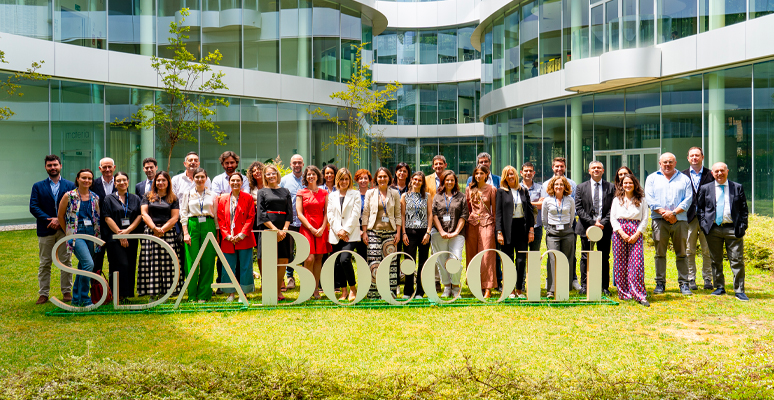For a manager working in public administration today, there are many skills considered necessary, such as those of responsible decision-making and problem-solving, training employees and managing processes, as well as promoting change and managing internal and external relations. This is according to SNA - the National School of Administration and its very recent call for entries for the 11th competition course designed to select 294 people to become the future managers of our country's central public administration. But there is one skill that never goes out of fashion in which public administrations can and must still continue to improve and invest, strategic people management, which differs from the mere "administration" of employee relations that has prevailed in recent decades.
The “People Management in PA” module concluded precisely on these themes, as part of our Executive Master's in Public Administration Management (EMMAP) course, in which faculty, alumni and guest speakers came together with one goal in mind: to offer participants a strategic approach to human resource management that is consistent with the functional, regulatory and economic constraints of administrations. People management depends not only on civil service regulatory frameworks, but also on the ability to design coherent and courageous corporate policies by department heads.
The module opened with a reflection offered by Giovanni Valotti, senior faculty at EMMAP, on the future of public service professionals, who are increasingly oriented toward the appreciation of skills (“who knows matters"), as opposed to a traditional model based on anchoring to the formal role ("who has the role matters"). Orientation toward the valorization of skills is also a crucial point in attracting young people under 35, the future of PA, which from research illustrated by Marta Micacchi, SDA Bocconi researcher, is among the first factors in attracting this segment of the population to a particular job. These perspectives are deeply intertwined with the path traced by the recent reforms of the Public Administration's selection processes, which - also in line with PNRR objectives - are geared toward building a competency-based system of employee access, development, growth and mobility, as illustrated by Raffaella Saporito, senior faculty at EMMAP. The paradigm shift introduced by the reform also inevitably translates into public contracts, on which Antonio Naddeo, ARAN president, spoke in dialogue with Raffaella Saporito. A number of key points emerged from Naddeo's testimony: first and foremost, resource and project management skills are needed to implement the infrastructure required by the NRP. It is not true that there are no such skills in the entities: perhaps there are few, but rather than suddenly introducing new ones, it is necessary to invest (first and foremost on training) on those that are already there so as to strengthen and broaden the horizon of individual contributions. In this sense, the PIAO is a useful tool to better focus the institution's strategy and missions and more clearly link human resource policy to this. Certainly, more simplification could have been achieved, but not all the administrations involved were willing to take steps backward in order to reduce the bureaucratic burden on administrations. Third, as far as contracts are concerned, this is a period of confidence in the agencies and their ability to sign bold and innovative supplementary contracts (including in relation to smart-working), where there is no shortage of tools made available: to succeed, you need to be very clear about what you want to achieve, guiding the negotiation.
While regulatory and contractual changes require HR influence to be oriented toward competency-based management, individual organizations are called upon to strategically integrate planning of requirements, mapping of gaps, use of selection systems and training to fill them. How can this change be introduced in PA? The means of implementation were discussed and examined by participants during the talk by Francesco Vidè, EMMAP faculty, including through the testimony of Alberto Caporale, HR Director of Unioncamere, and Erminia Giorno, Secretary General of the Cosenza Chamber of Commerce. The two guest speakers shared the experience of the chamber system as a concrete example of competency management, which begins with Unioncamere's definition of the professional profile system and is successfully applied to the Cosenza Chamber's planning, recruitment and selection processes.
Finally, participants reasoned on how the individual evaluation of public employees fits into this framework of great changes with Marta Barbieri, senior faculty at EMMAP, with an in-depth discussion on the evaluation of employees in smart-working, which from a strategic point of view should not include separate objectives from those defined overall for the entity and its employees.
It was a module full of interventions and perspectives, but the challenge for our participants of the 13th edition of EMMAP does not end here: an entire module dedicated to Public Leadership in which they will also learn the rationale and tools useful for reading the behavior of employees (but also bosses and colleagues), for encouraging their motivation and for training leadership skills in contexts with high formalization and rigidity of employment rules will be waiting for them soon.
SDA Bocconi School of Management






